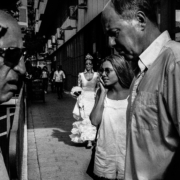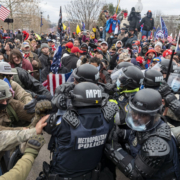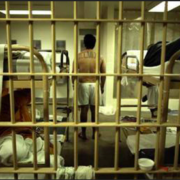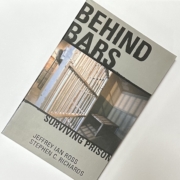My top recommended nonfiction books in the field of corrections in the United States
Among authors, publishers, purchasers, and readers, books serve different purposes. Moreover, the opinions about the goals of this important means of communication has changed over time.
But in my opinion a good nonfiction book should be timeless. In other words, the information that a monograph that fits this category provides should be as relevant when it was written as it is today, even as a commentary on how we approached a particular subject at a given point in time. I know this is a tall order, but since there are so many books that are published every year, we need a way of making sense of the products produced by this giant of a cultural industry.
So what do I believe are the top classic nonfiction books in the field of corrections (a field that encompasses the study of jails, prisons, inmates, correctional workers, and the policies and practices therein and laws that govern these institutions) in the United States?
First, although there are lots of fictionalized accounts of life behind bars, and numerous peer-reviewed and nonpeer reviewed articles that provide a window into the world of corrections, the books listed below hold several distinctions.
Second, there are many interesting books about corrections in other countries (such as Foucault’s Discipline and Punish: The Birth of the Prison), but since they do not directly deal with corrections in the United States, they are omitted from my list.
Third, another proviso is in order. Most of the books I include are outdated. Even though the statistics and many of the policies and practices mentioned in these monographs have changed, most of the arguments that the researchers present have withstood the test of time. In fact, in many cases, the problems that these books outline and analyze are exactly why corrections in the United States is in such a sad and sorry state of affairs today.
Fourth, notwithstanding the fact that these are the books that I typically assign whenever I teach a graduate seminar on corrections, most of these titles will jive well with what a Criminology/Criminal Justice graduate student might be required to know for their comprehensive exams in the field of corrections.
Fifth, many of the books are not easy reads. Anyone looking for a page turner would be hard pressed to find it among the monographs listed here.
Finally, I’ve purposely not included my books on corrections. That’s not because I don’t think they are important, nor must reads, but I did not want to distract the reader from other books out there that I think are worthwhile.
My top books include:
Journalist, Ted Conover’s (2001). Newjack: Guarding Sing Sing tells the story when he went undercover as a correctional officer at Sing Sing Correctional Facility, a maximum security prison, to provide an immersive and candid account of the daily life of corrections officers and the challenges they face in one of America’s most notorious prisons.
Clear, Todd. (2007). Imprisoning Communities: How Mass Incarceration Makes Disadvantaged Neighborhoods Worse, examines the impact of mass incarceration on disadvantaged neighborhoods in the United States. The author argues that the policies of mass incarceration have adverse consequences on communities already facing economic and social challenges, perpetuating a cycle of disadvantage and crime.
DiIulio, John J. (1987). Governing Prisons, presents an in-depth analysis of factors that shape the way that state prisons (with an explicit focus on New York, Texas and California) are managed and governed. He outlines a considerable amount of diversity in these prison systems. In particular, DiIulio reviews the challenges faced by administrators, policymakers, and correctional officers in maintaining order and safety within the correctional facilities and systems they are tasked with running.
Gonnerman, Jennifer. (2004). Life on the Outside: The Prison Odyssey of Elaine Barlett, also written by a journalist, tells the true story of Elaine Bartlett, a woman sentenced to two decades in prison for a nonviolent drug offense, and her struggles with the criminal justice system, re-entry into society, and the pursuit of a better life for herself and her children.
Hassine, Victor. (1996). Life Without Parole: Living in Prison Today (5th Edition), blends autobiography and social critique, authored by a former inmate who has since passed away. It offers a compelling personal and philosophical reflection on the experience of incarceration, life sentences, and their profound impact on both prisoners and society as a whole.
Irwin, John. (1985). The Jail, is an ethnographic study of a county jail, delving into the experiences of both inmates and staff to provide a comprehensive view of the jail environment. Irwin’s insights and interviews with inmates humanize the detainees, shedding light on the unique challenges and injustices faced by those awaiting trial or serving short-term sentences.
Jacobs, James. (1977). Stateville, is one of the earlier studies of the social organization and culture of a maximum-security prison, offering a detailed exploration of the power dynamics and inmate subcultures within the facility.
Lombardo, Lucien X. (1989). Guards Imprisoned, reviews the experiences and challenges of correctional officers, exploring the impact of working in the prison environment on their mental health and well-being.
Maruna, Shadd. (2001). Making Good: How Ex-Convicts Reform and Rebuild Their Lives, presents the results of a qualitative study of how individuals with criminal records overcome their pasts and reintegrate into society as productive citizens. It challenges negative stereotypes about ex-convicts and provides valuable insights into the factors that facilitate positive transformation.
McCleary, Richard. (1979). Dangerous Men: The Sociology of Parole, (2nd Edition), provides an ethnography of a state parole system and the impact it has on its parolees. It emphasizes how societal attitudes and institutional practices influence the reentry experiences of released prisoners.
Miller, Jerome G. (1996). Search and Destroy: African-American Males in the Criminal Justice System, examines the racial disparities within the criminal justice system and the overrepresentation of African-American males in prisons and jails.
Morris, Norval and Michael Tonry. (1990). Between Prison and Probation, reviews the history and effectiveness of intermediate sanctions, exploring alternative methods to traditional imprisonment, such as probation and community-based programs. The book offers important insights into creating more effective and balanced sentencing practices.
Oshinsky, David M. (1997). Worse than Slavery: Parchman Farm and the Ordeal of Jim Crow Justice, reviews the brutal realities of a notorious former plantation, that became a Mississippi State Penitentiary, during the era of Jim Crow segregation, drawing disturbing parallels between the prison system and slavery. The book explores the connection between the history of racial oppression and modern-day mass incarceration.
Owen, Barbara. (1998). In the Mix: Struggle and Survival in A Women’s Prison, is one of the first comprehensive examinations of the lives of incarcerated women and the challenges they face in a correctional setting, shedding light on the unique issues and gender-specific issues within the prison system.
Petersilia, Joan. (2003). When Prisoners Come: Parole and Prisoner Re-entry, focuses on the process of prisoner re-entry and the challenges faced by individuals reintegrating into society after incarceration. It emphasizes the importance of comprehensive support and resources for former prisoners as they strive to rebuild their lives in order to minimize the possibility of recidivism.
Rideau, Wilbert and Ron Wikberg. (1992). Life Sentences: Rage and Survival Behind the Bars, is derived from a series of essays/articles, some of which appeared in The Angolite (the Louisiana State Penitentiary newspaper), written by two former death row inmates. In addition to providing a brief history Angola prison, these pieces offer a firsthand account of life on death row, sexual assault behind bars, prison policies, dying in prison, and the transformative power of education.
Sykes, Gresham (1958). The Society of Captives, examines the informal social dynamics and power structures within prisons, exploring how the institutional environment influences the behavior and attitudes of both inmates and staff. By analyzing the informal social codes (e.g., the Convict Code) and relationships that shape life within prison walls, Sykes provides valuable insights into the functioning of the corrections system.
To most scholars of corrections there will probably not be any surprises in this list, but for readers who are unfamiliar with the academic field of corrections, these books are worth exploring.
Clearly there are lots of other good books on corrections in the United States to consult, but this list should serve as a starting point or invitation for individuals interested in learning more about the intricacies of the American prison system, the people who are housed there, those who work behind bars, and the intricacies of policies and procedures that operate in these unique environments.
Photo credit:
Johannes Jansson/norden.org,
Title Book Pages
CC BY 2.5 dk, https://commons.wikimedia.org/w/index.php?curid=25009679












